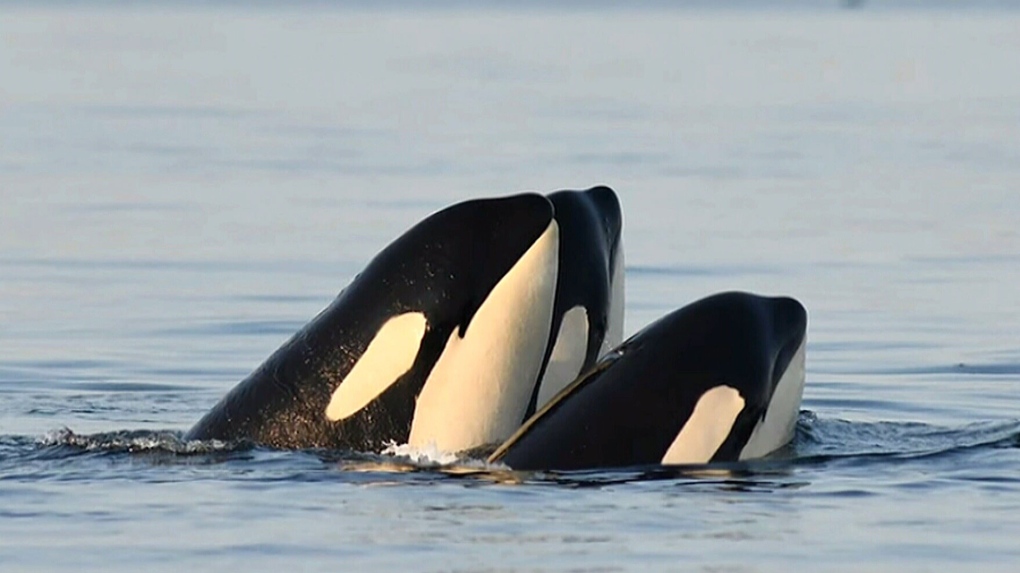Orcas ramming boats doing some 'teenage roughhousing': UBC researchers

Gangs of killer whales have been causing chaos off the coast of Spain for the past few years, ramming into hundreds of boats, causing expensive damage to some and even sinking three since 2020.
What’s causing orcas to target vessels – bumping into them and tearing their rudders off – remains a mystery, researchers at the UBC Marine Mammal Research Centre have a theory: teenage mischief.
The whales seem to go after sailboats in particular, and specifically their rudders, which led the scientists to think the animals are motivated by curiosity above all. In addition, most of the orcas interacting with boats in the area are juveniles.
“Killer whales are very curious and they love to inspect things and see what’s going on,” Taryn Scarff, a masters student with the research centre told CTV News. “They’re just having some fun, and it’s just some teenager behaviour that’s gotten a little bit out of hand.”
Gotten out of hand, because killer whales are massive and can cause a lot of harm with out meaning to.
“If they were purposefully attacking the boats, they would be a little bit more aggressive in their approach. They seem to be approaching the boats quite calmly,” Scarff said, noting that the whales only appear aggressive because of their size.
“If it was a more planned attack, I would assume they’d be putting more speed into it. But that would also definitely take a toll on their bodies – it would be like us running into a wall over and over,” she continued.
The main theory that emerged when the behaviour among the killer whale population off the Spanish coast began was that one individual whale—the mother within the pod—had a traumatic event involving a sailboat, and she was seeking revenge on the vessels, Scarff explained.
She also began teaching younger whales to do the same.
“They saw mum doing this behaviour and thought it looked really fun and cool so they started doing it,” said Scarff.
The boat-bashing behaviour is now catching on with the young whales in another group, and seafarers' encounters with them are increasing.
That’s because, similar to human teenagers, killer whales have fads. And boat-bumping may just be the hot new thing with the kids in that area.
Another example of an orca fad is when a female in the Pacific Northwest’s Puget Sound wore a dead salmon on her nose, and the trend spread to all three pods in her area. That trend sparked in the 1980s, and died quickly after it appeared.
Like human fads, researchers don’t know how long this one will last.
Scientists are trying to figure out why exactly the whales are ramming boats, and what particularly interests them about said boats, before anyone gets seriously hurt.
A research group specific to the phenomenon has been set up in Spain, and they created an app to track killer whale sightings in hopes there won’t be any more sinkings.
Sea crews can check the app while travelling, and use it like a traffic light. Greens mean no killer whale sightings in the area, yellow means some and red means there have been many, so find a different route.
Scarff notes that current theories about why orcas are targeting boats are purely speculation from researchers at this point, and after three years of research into this phenomenon, there’s more work to do.
“At the end of the day, who really knows other than the killer whales?” she said.
CTVNews.ca Top Stories

Widow looking for answers after Quebec man dies in Texas Ironman competition
The widow of a Quebec man who died competing in an Ironman competition is looking for answers.
Amid concerns over 'collateral damage' Trudeau, Freeland defend capital gains tax change
Facing pushback from physicians and businesspeople over the coming increase to the capital gains inclusion rate, Prime Minister Justin Trudeau and his deputy Chrystia Freeland are standing by their plan to target Canada's highest earners.
Tom Mulcair: Park littered with trash after 'pilot project' is perfect symbol of Trudeau governance
Former NDP leader Tom Mulcair says that what's happening now in a trash-littered federal park in Quebec is a perfect metaphor for how the Trudeau government runs things.
U.S. Senate overwhelmingly passes aid for Ukraine, Israel and Taiwan with big bipartisan vote
The U.S. Senate has passed US$95 billion in war aid to Ukraine, Israel and Taiwan, sending the legislation to President Joe Biden after months of delays and contentious debate over how involved the United States should be in foreign wars.
Wildfire southwest of Peace River spurs evacuation order
People living near a wildfire burning about 15 kilometres southwest of Peace River are being told to evacuate their homes.
World seeing near breakdown of international law amid wars in Gaza and Ukraine, Amnesty says
The world is seeing a near breakdown of international law amid flagrant rule-breaking in Gaza and Ukraine, multiplying armed conflicts, the rise of authoritarianism and huge rights violations in Sudan, Ethiopia and Myanmar, Amnesty International warned Wednesday as it published its annual report.
Train derailed in Sarnia after colliding with a truck
Police are investigating after a transport truck collided with a train in Sarnia.
Fewer medical students going into family medicine contributing to doctor shortage
As some family doctors are retiring and others are moving away from family medicine, there are fewer medical students to take their place.
'It's discriminatory': Individuals refused entry to Ontario legislature for wearing keffiyeh
Individuals being barred from entering Ontario’s legislature while wearing a keffiyeh say the garment is part of their cultural identity— and the only ones making it political are the politicians banning it.
































